Scooping and pouring for preschoolers is not a new idea in early childhood education but rather an old standby. Activities including scooping and pouring in a sensory bin are some of the most effective ways to develop certain practical life skills.
But why not add a twist to the traditional scooping and pouring activities with scooping and pouring patterns?
Scooping and Pouring Sensory Activity for St. Patrick’s Day
Toddlers are always stirring up trouble when they start to explore and move around. They pour, dump, or otherwise get into things because of their curiosity for discovery!
When little ones pick up a bowl or cup and turn out the contents on the floor, it may be frustrating to mamas and teachers who have just picked up all of their toys for the third time. But playtime is such an important role in childhood development, and believe it or not, dumping toys is too!
FAQ About Scooping and Pouring Activities
What are the benefits os scooping and pouring activities anyway? Let me explain by answering some frequently asked questions.
Dumping and pouring is fun! Toddlers explore gravity and weight by dumping toys and bins.
Along the way they learn about cause-and-effect, muscle control (to not pour all of it out), and self awareness as to what their bodies can do. And, toddlers crave the sensory experience that accompanies dumping toys!
Dumping toys also trains large muscle groups to be more controlled, and that is a precursor to fine motor skill development.
You might also fine preschool aged children who also dump toys, and for the same reasons as above!
Simply put, scooping and pouring activities are beneficial because they are important in development and refinement of motions needed for managing practical life skills, like self feeding, turning door knobs, buttoning clothing or turning a key or flipping a pancake.
Scooping and pouring activities provide important practice that will lead to greater independence.
Offering tools like spoons, scoops, and small prep bowls in your sensory center for preschool is easy to add to any preschool theme, even St. Patrick’s Day. Consider adding plastic black pots, gold coins, or gold acrylic table scatter to create a St. Patrick’s Day sensory bin.
Get the Best Scoops for Preschoolers
Having the right tools can make all the different when teaching toddlers. Here are some of the scoops, bowls, and spoons we have for sensory bins.
St. Patrick’s Day Pattern Activity for Preschoolers
Who knew this rice pouring activity would be so fun for my preschoolers?! This is one you’ll want to saev for your sensory table ideas!
Frankly, I kinda thought most of my preschoolers would think, “Yeah, whatever, Ms. Sarah,” and just begin scooping and pouring and dumping the rice everywhere! But to my surprise, the children willingly got to work at my suggestion to make patterns.
And I sat back and watched as the children ran away (in the non-literal sense) with the activity.
Materials
Not much is needed for this activity. You probably have everything on hand, or at least an easy substitute.
- five pounds white rice
- liquid watercolor (I like Colorations
brand best.)
- two glass bowls (I like Pyrex
because they are so sturdy.)
- a glass milk bottle
- a large glass carafe
- scoops (I used formula scoops, but these plastic coffee scoops
would work great, too.)
The Set-Up
First you’ll need to dye the rice, a few cups for each color. I split a five-pound bag of rice in half and dyed one part green and the other yellow using a few squirts of liquid watercolor. You can add a little rubbing alcohol or even hand sanitizer to set the color but it’s not always necessary. Check here for full instructions and best results.
Once the rice has dried, pour it into the two Pyrex bowls. Let me tell you why I like to use glass bowls:
- Pyrex is sturdy enough for the curve that comes with kids learning to handle fragile things.
- Glass allows the children to easily see through the containers. This helps them understand the concepts of “more” and “less” as they scoop and pour from the bowls.
Set the bowls of rice, the glass milk bottles, and the carafe in a large under-the-bed tote (or a real sensory table
if you have one). Put the scoops in the bowls of rice and invite your preschoolers to come and play!
Scooping and Pouring Patterns Activity
While alternating colors, the preschoolers gently scooped the rice and slowly poured the grains into the milk bottle. One after the other, again and again, until the bottle filled to the top.
It reminded me of those sand bottle crafts with the layers upon layers of colorful sand. In fact, you could make a sensory or discovery bottle out of this idea. And while sand bottles are beautiful, I appreciate these rice bottles so much more because they represent layers upon layers of fine motor and patterning practice for my preschoolers!
And, might I add, the rice made the most delightful tinkling sound as the rice hit the bottom of the glass bottles. The children giggled.
The children learned that scooping and pouring patterns were not as easily done as our other scooping and pouring activities had been. First of all, they had to focus on dexterously pouring the rice to avoid spilling.
Then they noticed that once scoop was not always enough to fill in a full layer of color. Further observations were made as they neared the narrower neck of the bottle and learned it took fewer scoops to make the same layer of rice.
We practiced only ab patterns, but more advanced preschoolers can attempt aab patterns or abc patterns. Teaching preschool pattern activities can be tricky and making this 100% hands-on and sensory based was a fun and new way to practice a math activity. We did these for a St. Patrick’s Day theme, but any preschool theme would work using the right colors of dyes rice.
When the milk bottle became full the children poured their patterns into the larger carafe. They quickly noticed that the patterns “disappeared” as the grains of rice got all mixed up from the pouring.
The final and natural step was to pour the large carafe of rice back into the smaller glass milk bottle. It was a quick lesson that it is much more difficult to pour from a larger container into a smaller one.
Measurement activity, anyone?
The rice ping-ponged everywhere, spilling over into the bin, again making the most delightful tinkling sound. The giggling continued and the children scooped and poured from the sensory bin and continued to fill the bottles and carafe.
The importance of scooping and pouring activities
Scooping and pouring activities have a lot of value. Here are just a few life skills these activities help develop:
- using utensils
for self-feeding
- scooping with a serving spoon
- hand shoveling
- turning a door knob
- screwing a cap on a bottle
- brushing one’s hair
Ways to Extend this Activity
Have different needs in your classroom? Try some of these modifications.
- Turn this into a scooping and pouring for toddlers activity by using oatmeal or pom poms.
- Add this to your scoop activities at your sensory table, and use a variety of scoops like baby formula scoops or protein powder scoops. Ask your preschoolers which scoops are more helpful.
- Save the leftover rice for a rice sensory bin.
- Add more colors of rice for more advanced preschoolers, then save it all for a rainbow rice sensory bin.
- Use a baby food jar or small water bottle to make sensory bottle for toddlers. Just be sure to hot glue to lids on!
- Offer sheets on construction paper in the bin and invite your toddlers to scoop and pour and match the colors.
Clearly, scooping and pouring activities have their place in preschool education. Take it to the next level by encouraging them to make patterns as they scoop, effectively practicing multiple skills and concepts at once. The children will still love it just as much.
As I said, who knew that scooping and pouring patterns would be so much fun?
And no worries over the colors of rice getting all mixed up in the tote bin. I did the reduce, reuse, recycle bit and used it all for a St. Patrick’s Day sensory bin!
Related

I’m Sarah, an educator turned stay-at-home-mama of five! I’m the owner and creator of Stay At Home Educator, a website about intentional teaching and purposeful learning in the early childhood years. I’ve taught a range of levels, from preschool to college and a little bit of everything in between. Right now my focus is teaching my children and running a preschool from my home. Credentials include: Bachelors in Art, Masters in Curriculum and Instruction.
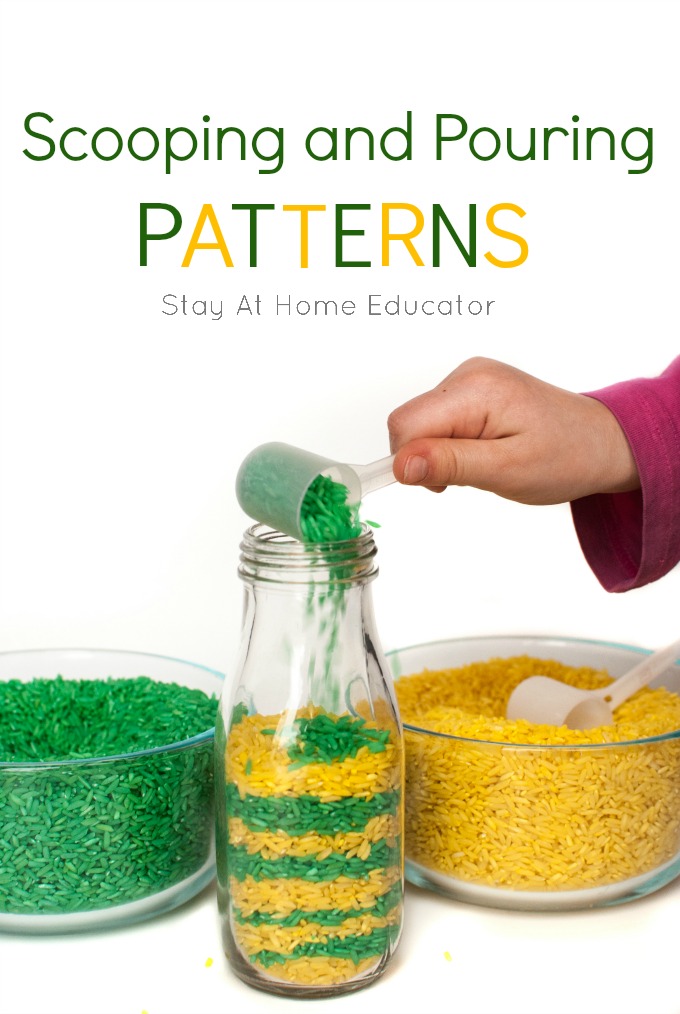
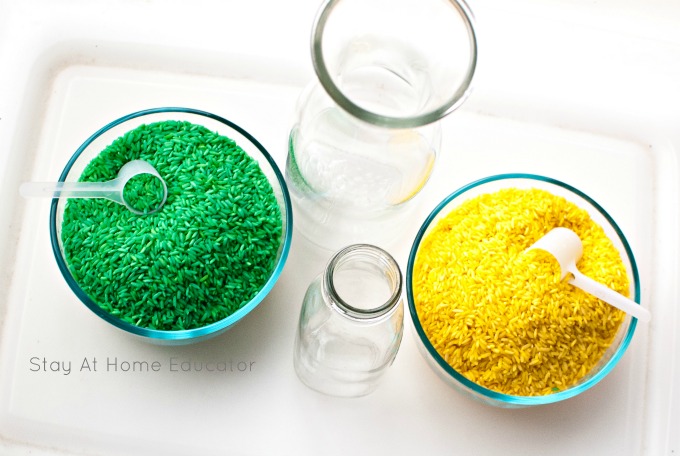
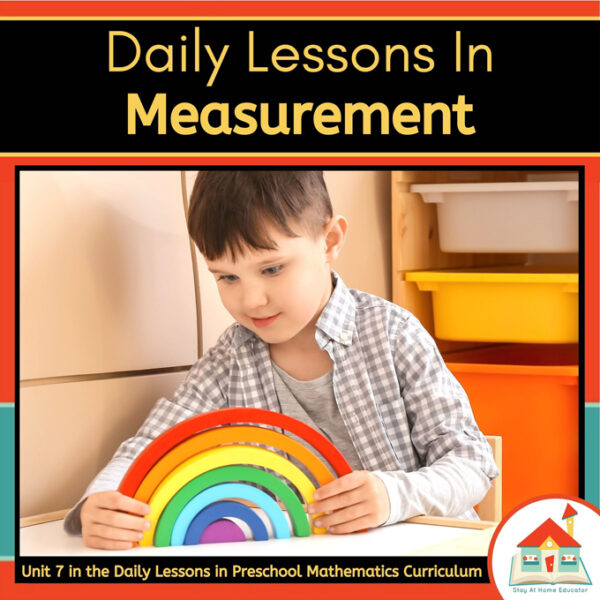
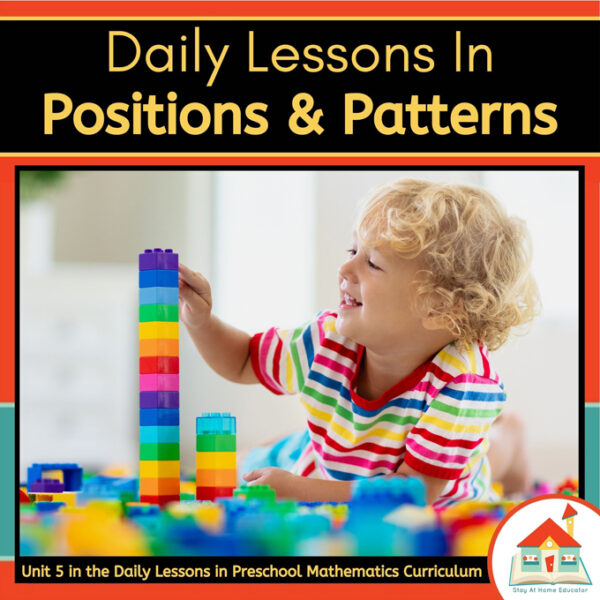
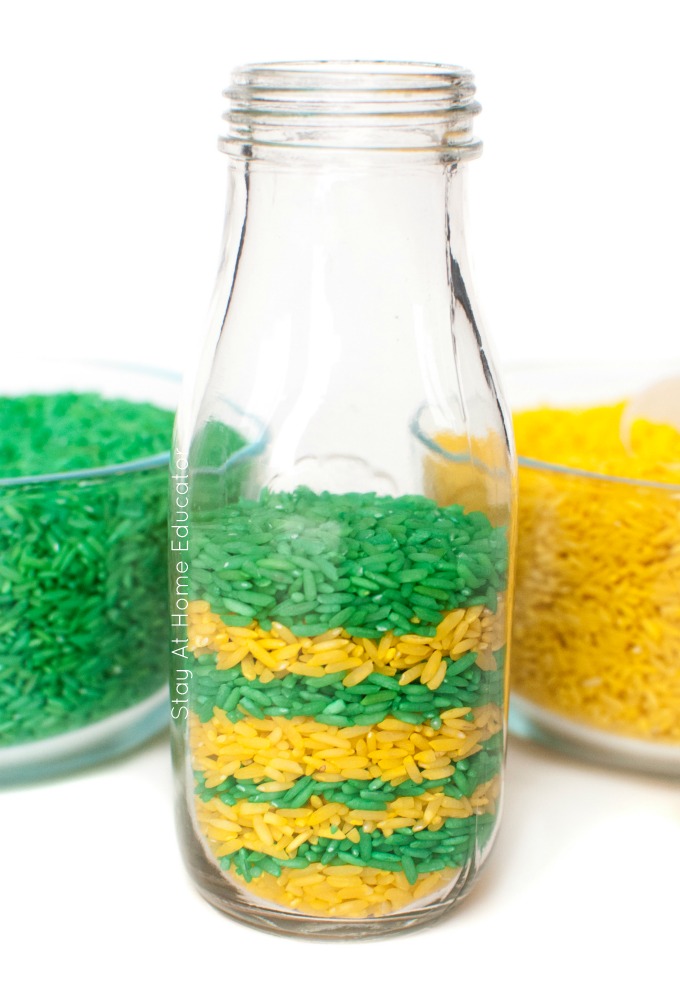
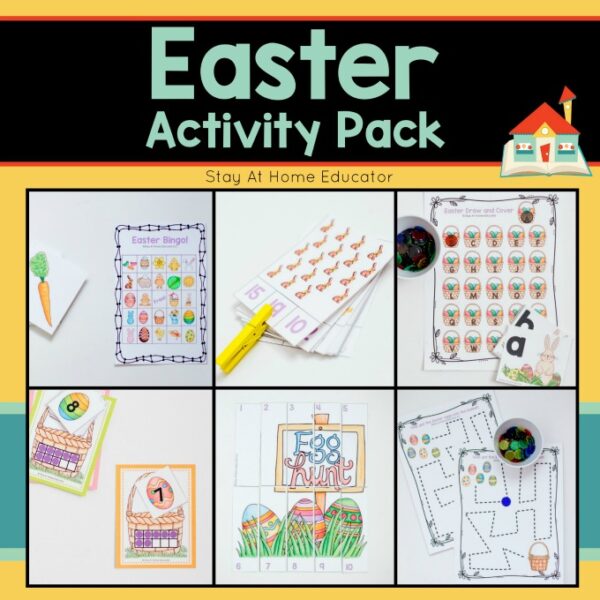
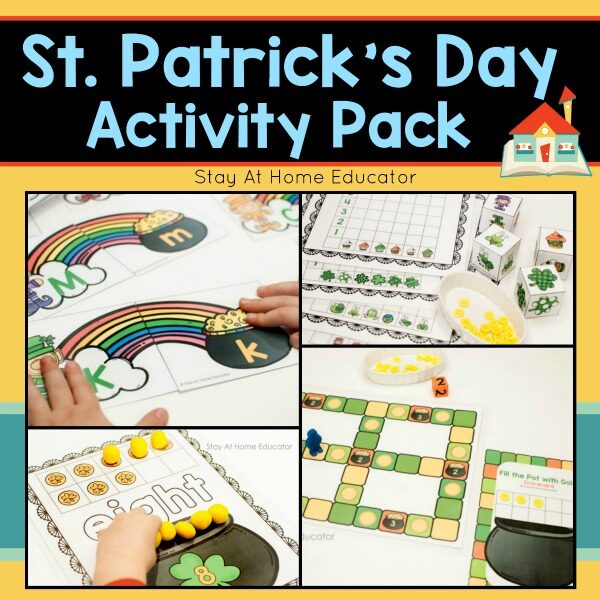
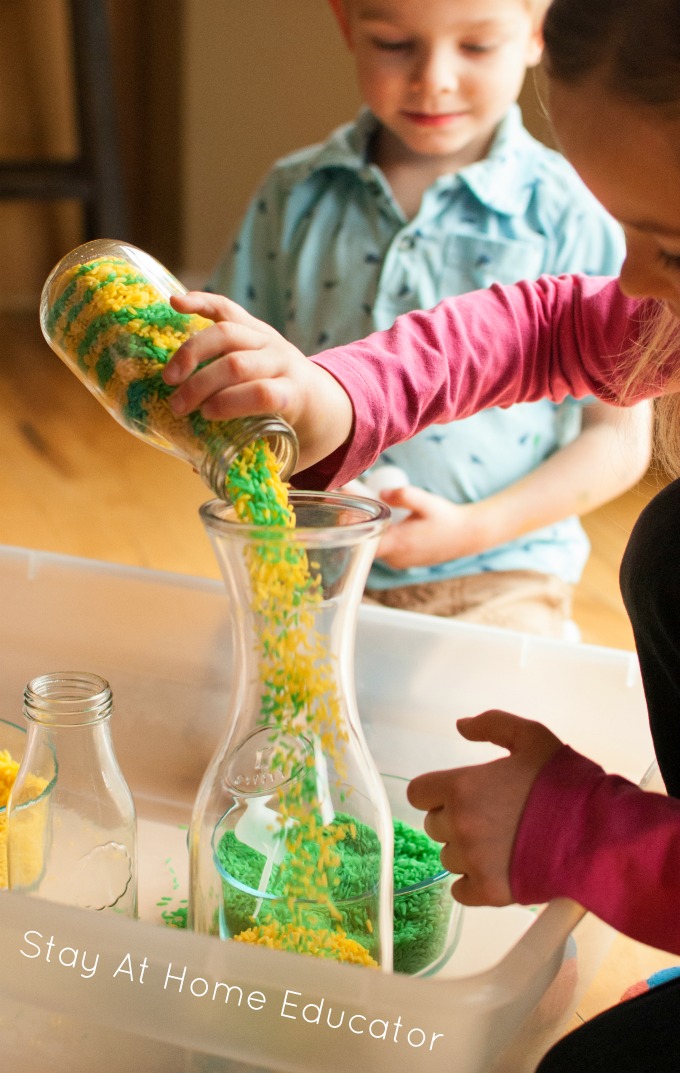
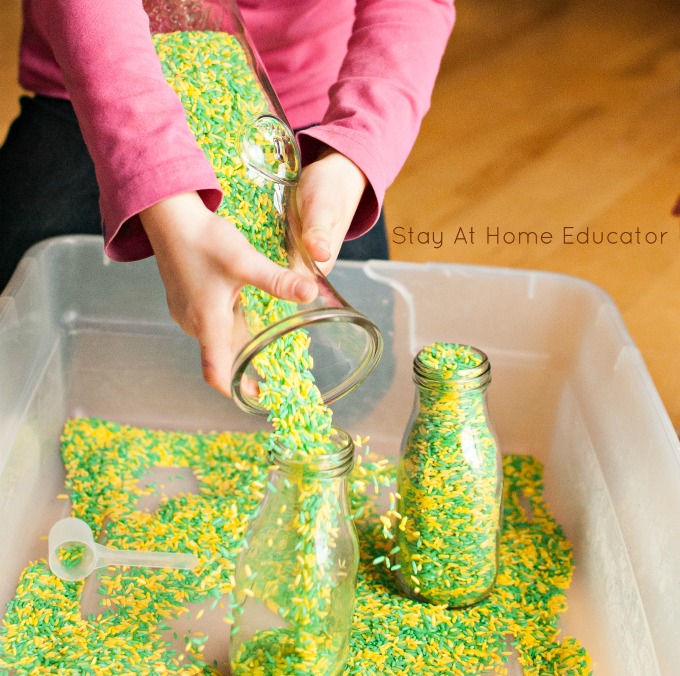
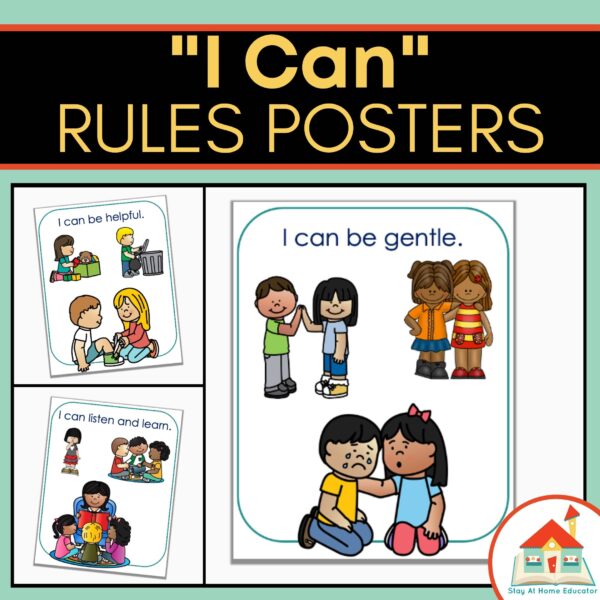
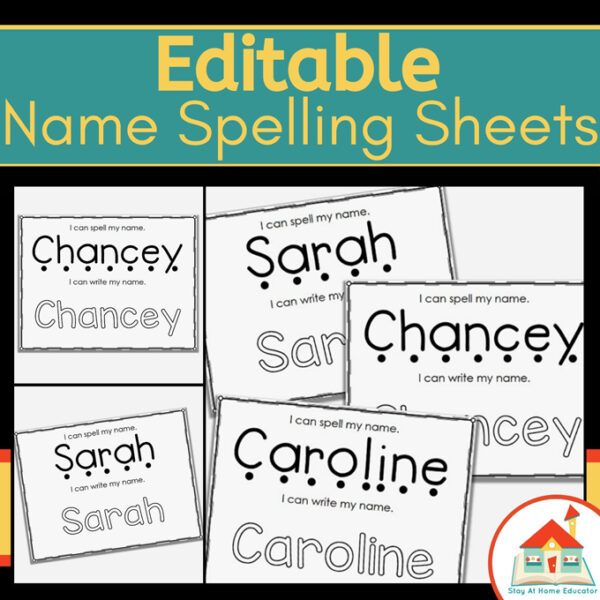

[…] Source: stayathomeeducator.com […]